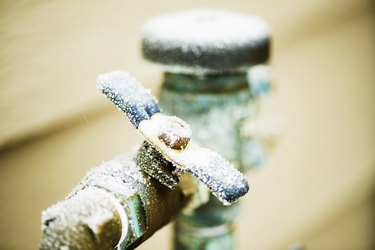Advice for Avoiding Frozen Pipes in Winter: Professional Advice
Book NowHow do you really feel when it comes to Winter Plumbing Precautions: Preventing Frozen Pipes?

Winter can ruin your pipes, particularly by freezing pipelines. Right here's just how to avoid it from happening and what to do if it does.
Intro
As temperatures drop, the danger of frozen pipes rises, possibly causing expensive fixings and water damages. Understanding just how to stop frozen pipelines is crucial for house owners in chilly environments.
Recognizing Icy Pipelines
What causes pipes to ice up?
Pipes freeze when subjected to temperatures listed below 32 ° F (0 ° C) for prolonged periods. As water inside the pipelines freezes, it expands, taxing the pipeline walls and potentially causing them to rupture.
Dangers and damages
Frozen pipes can result in water system interruptions, property damage, and pricey repairs. Ruptured pipes can flood homes and trigger considerable structural damage.
Indications of Frozen Pipes
Recognizing icy pipes early can prevent them from bursting.
How to determine icy pipes
Search for decreased water flow from faucets, uncommon smells or sounds from pipes, and noticeable frost on exposed pipes.
Avoidance Tips
Protecting at risk pipelines
Wrap pipelines in insulation sleeves or use warm tape to shield them from freezing temperatures. Focus on pipes in unheated or outside locations of the home.
Home heating techniques
Keep indoor spaces properly heated up, especially locations with plumbing. Open closet doors to enable cozy air to distribute around pipes under sinks.
Safeguarding Outside Pipes
Yard tubes and outdoor taps
Detach and drain garden tubes before winter. Install frost-proof spigots or cover outdoor faucets with protected caps.
What to Do If Your Pipes Freeze
Immediate activities to take
If you believe frozen pipes, maintain faucets open up to eliminate stress as the ice melts. Utilize a hairdryer or towels soaked in hot water to thaw pipelines slowly.
Long-Term Solutions
Architectural modifications
Consider rerouting pipes away from outside walls or unheated areas. Add additional insulation to attic rooms, basements, and crawl spaces.
Updating insulation
Invest in top notch insulation for pipes, attics, and walls. Appropriate insulation aids keep consistent temperature levels and reduces the risk of frozen pipelines.
Final thought
Avoiding icy pipelines requires proactive measures and quick reactions. By understanding the causes, indicators, and safety nets, house owners can shield their pipes throughout winter.
6 Proven Ways to Prevent Frozen Pipes and Protect Your Home
Disconnect and Drain Garden Hoses
Before winter arrives, start by disconnecting your garden hoses and draining any remaining water. Close the shut-off valves that supply outdoor hose bibs and leave the outdoor faucet open to allow any residual water to drain. For extra protection, consider using faucet covers throughout the colder months. It’s also important to drain water from any sprinkler supply lines following the manufacturer’s directions.
Insulate Exposed Pipes
Insulating your pipes is an effective way to prevent freezing. Pipe insulation is readily available at home improvement stores and is relatively inexpensive. Pay close attention to pipes in unheated areas such as the attic, basement, crawl spaces, or garage. Apply foam insulation generously to create a buffer against the cold. You can also wrap your pipes in heat tape or thermostat-controlled heat cables for added warmth.
Seal Air Leaks
Inspect your home for any cracks or openings that could let in cold air. Seal any holes around the piping in interior or exterior walls, as well as the sill plates where your home rests on its foundation. Additionally, make sure to keep your garage door closed unless you’re entering or exiting. Leaving it open creates a significant air leak that can lead to frozen pipes.
Allow Warm Air Circulation
During cold snaps, it’s essential to allow warm air to circulate evenly throughout your home. Leave interior doors ajar to promote better airflow. Open kitchen and bathroom cabinets to help distribute heat consistently around the rooms. If you have small children or pets, be sure to remove any household chemicals or potentially harmful cleaners from open cabinets for safety.
Let Faucets Drip
A small trickle of water can make a big difference in preventing ice formation inside your pipes. When temperatures drop significantly, start a drip of water from all faucets served by exposed pipes. This continuous flow helps prevent the water from freezing. Additionally, running a few faucets slightly can relieve pressure inside the pipes, reducing the chances of a rupture if the water inside does freeze.
https://choateshvac.com/6-proven-ways-to-prevent-frozen-pipes-and-protect-your-home/

I was made aware of that report on Preventing and dealing with frozen pipes from a pal on a different web page. Make sure you take the opportunity to promote this write-up if you appreciated it. Thank-you for your time invested reading it.
Book A Service Call